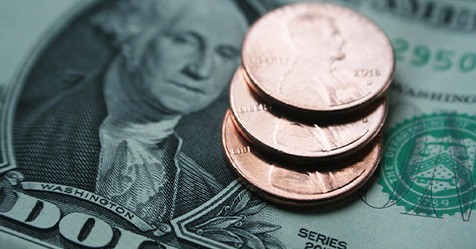Although most likely to be identified as the primary cause of a slip-and-fall accident, please note that flooring materials, maintenance, and hazards contribute to only about half of the problem. 
That is to say, regardless of how safe the floor is, the remaining 50 percent of slips, trips, and falls are attributable to four other areas.
These four contributing factors include:
- Footwear
- Fraud
- Hazard identification
- Training.
Therefore, a prevention strategy should focus on a comprehensive approach that addresses all causes.
However, we must not neglect the vital topic of safe or unsafe floors as it relates to cleaning and maintenance.
Types Of Floor Surfaces
Before identifying what makes for a safe or an unsafe floor — and the proper cleaning and maintenance of a given surface — we must first explore the types of floor surfaces.
There are three primary families of flooring surfaces:
- Hard surfaces like ceramic and marble
- Resilient surfaces like vinyl and rubber
- All other surfaces like wood and carpeting.
Floor Maintenance Products
Most cleaning compounds are soap-based or detergent-based; these compounds employ surfactants as the mechanism by which they work.
Surfactants are molecules that bind dirt and grease particles together through a process known as emulsification, enabling them to be washed away.
However, grease in surface pores often bonds with residual soap molecules and builds up, creating a soap film.
This film is further compounded by the effects of soil, mineral deposits, and other contaminants, eventually forming a polymerized film or polymerization.
Detergent-based floor care products may leave a soap residue that becomes slippery when wet, directly contributing to slips-and-fall incidents.
Fragrances are often oil-based and may contribute to the formation of a polymerized film.
It should also be noted that traditional cleaning methods have changed little, if at all, over the years.
Common misconceptions persist, sometimes fueled by large corporate advertising campaigns.
Some common misinformation includes notions that:
- Shiny equals clean
- Dull equals dirty
- Fragrance equals clean.
The use of acid-based, non-detergent safety maintainers has been effective in preventing slip-and-fall accidents.
These products clean by restoring the floor to its original condition without leaving a soap film.
It is highly recommended that you consult your supplier or distributor of floor care tools and equipment for more information on these traction-enhancing products.
But, don’t choose acid-based cleaners with acid etchants, as they can actually remove the ceramic tile’s protective glaze.
The floor’s safety may improve as a result of this, but it will be very difficult to keep clean.
Floor Maintenance Practices
Certain floor care practices also contribute to slips, trips, and falls.
Among these contributors to unsafe surfaces are: 
- Using too much or too little of a floor care product
- Using the wrong cleaner for a particular surface
- Not following label instructions
- Not rinsing the floor care product, if required
- Not brushing the floor thoroughly, if required
- Not having or adhering to a routine floor maintenance schedule.
Be sure to check back each month for another part of this ongoing series designed to help keep your floors clean and slip-resistant and your staffs and building occupants safe and healthy.
For the complete IEHA Floor Safety Curriculum, please visit www.IEHA.org and sign up for the updated Safety and Security Module to be released in 2013.



